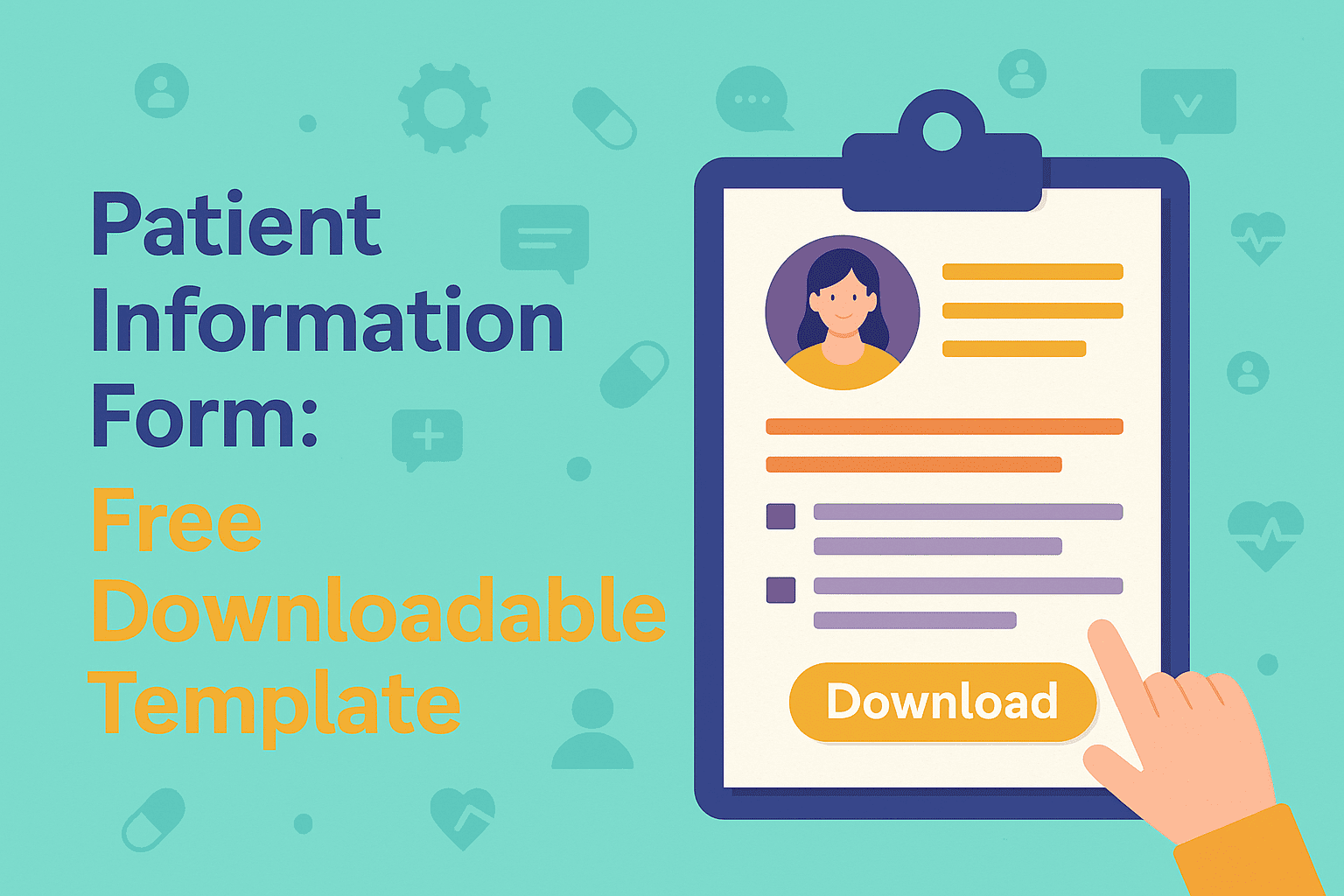Updated on: July 15, 2025
A well-designed Patient Information Sheet is foundational in clinical care—it streamlines intake, enhances data accuracy, supports compliance, and improves patient experience. With DocScrib’s AI capabilities, gathering these vital data becomes faster and more error‑free.
🔍 What Is a Patient Information Sheet?
This essential document captures key patient details including:
- Demographics: name, birthdate, contact info
- Emergency contacts
- Insurance and billing data
- Medical background: allergies, medications, chronic conditions
- Additional fields: preferred language, consent, and social history
A clear, well-structured sheet minimizes back-and-forth during check-in and ensures consistency.
🎯 Key Sections to Include
- Demographic Details – Full legal and preferred names, DOB, gender, contact info
- Social History & Preferences – Preferred language, cultural considerations, consent preferences
- Emergency & Next‑of‑Kin Contacts – Full names, relationships, phone numbers
- Insurance & Billing Info – Primary/secondary coverage, policy numbers, responsible party
- Medical Overview – Current medications, allergies (drug/food/environment), chronic conditions
- Consent & Permissions – Consent for treatment, data privacy, communication preferences
📊 Choosing the Right Template
| Template Type | Strengths | Best For |
|---|---|---|
| Simple Intake Sheet | Quick, straightforward contact and consent capture | Routine clinics, repeat visits |
| Extended Info Form | Captures medical/social history + lifestyle details | First-time visits, family medicine |
| Digital Intake Format | Interactive fields, mobile-friendly | Modern, tech-integrated practices |
| AI-Populated Sheet | Auto-fills from voice input, minimizes errors | Fast-paced clinics, drop-in settings |
📈 Efficiency Gains Chart
Workflow Type | Avg. Completion Time (min)
----------------------------------------------------
Paper Intake Form | 5.0
Extended Digital Intake | 4.0
Voice-AI Assisted Intake | 2.0
Moving to AI-assisted intake increases efficiency by nearly 60%.
💡 Best Practices
- Keep it concise – focus on essentials
- Use conditional logic – display only relevant fields
- Enable mobile completion – patients often fill forms on phones
- Highlight crucial fields – allergies and emergency contacts
- Enable digital signing – reduce print-outs and streamline workflows
🤖 How DocScrib Elevates Intake
- Voice capture during patient check-in
- Auto-structured fields for demographics, contacts, meds, allergies
- Real-time editing and completeness prompts
- Seamless EHR/data export
- HIPAA compliance & secure storage
DocScrib transforms paper forms into error-free, digital experiences—saving time and reducing friction.
✅ Final Takeaways
- A standard, structured patient information sheet ensures comprehensive data collection.
- Templates tailored to your practice type improve usability.
- Voice‑ and AI‑powered intake are about twice as fast as manual entry.
- With DocScrib, you can modernize your intake process—without losing accuracy or compliance.
In This Article
